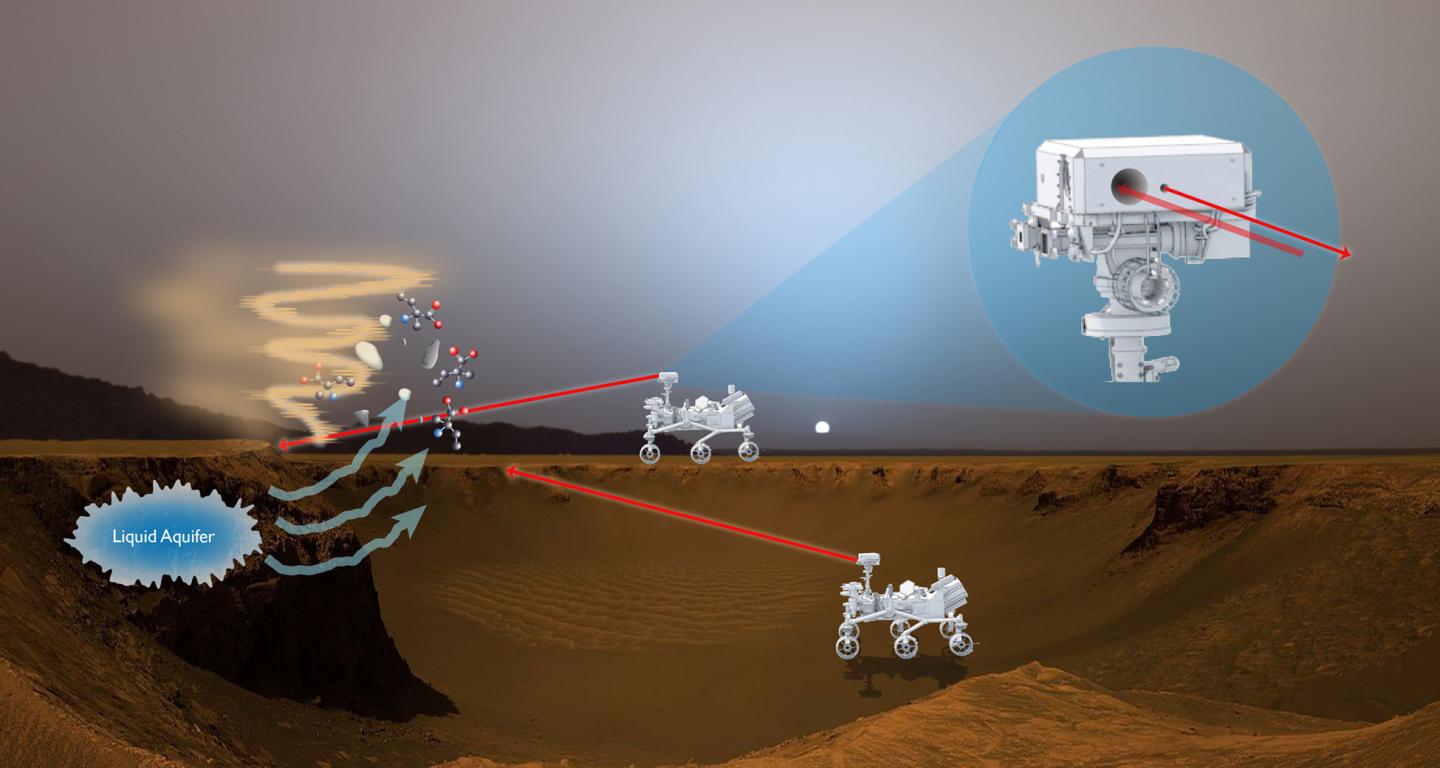
The device, known as the Bio-indicator Lidar Instrument (BILI), could be used to detect fluorescence from trace compounds in the Martian atmosphere.
Earth observation satellites already use fluorescence Lidar to detect chemicals implicating climate change in our atmosphere, but the technique has never been used in science on other planets. "NASA has never used it before for planetary ground level exploration. If the agency develops it, it will be the first of a kind,” said technologist Branimir Blagojevic of the Goddard Space Flight Centre in Greenbelt, Maryland, who is leading a team developing a prototype instrument aimed at proving that this remote technique is feasible for use on Mars.
Previously, Blagojevic worked for Science and Engineering Services, which developed the version of the sensor used by the US military. The planetary science version is envisaged as being placed on a rover's mast. In operation, it would first scan the local environment looking for dust plumes. Once it had detected one, it would use two ultraviolet lasers to pulse light at the dust, causing certain particles to fluoresce. Analysing this fluorescence reveals whether the dust contains organic materials, and also gives information on the particle size.
BILI would be a survey instrument rather than a detector for detailed analysis, Blagojevic said. It would be capable of detecting in real time small levels of complex molecules from a distance of several hundred metres; with no need for physical contact with the dust, there is no risk of contamination. Moreover, it could carry out surveys in areas not accessible to conventional Rovers.
"This makes our instrument an excellent complementary organic-detection instrument, which we could use in tandem with more sensitive, point sensor-type mass spectrometers that can only measure a small amount of material at once," Blagojevic said. "BILI's measurements do not require consumables other than electrical power and can be conducted quickly over a broad area.”
The project is aiming to develop a smaller, more rugged version of the sensor than is currently available; Blagojevic is also hoping to confirm that it can detect very small concentrations of a broad range of organic compounds in ground-level aerosols. It could also be installed on an orbiting spacecraft to detect life-indicating chemicals in the atmosphere s of other planetary bodies, such as the moons of Saturn and Jupiter.




Swiss geoengineering start-up targets methane removal
Several rather dubious statistics in this report. IF methane had 120× the thermal effect of CO2 that would be TWO orders of magnitude. Two is not...